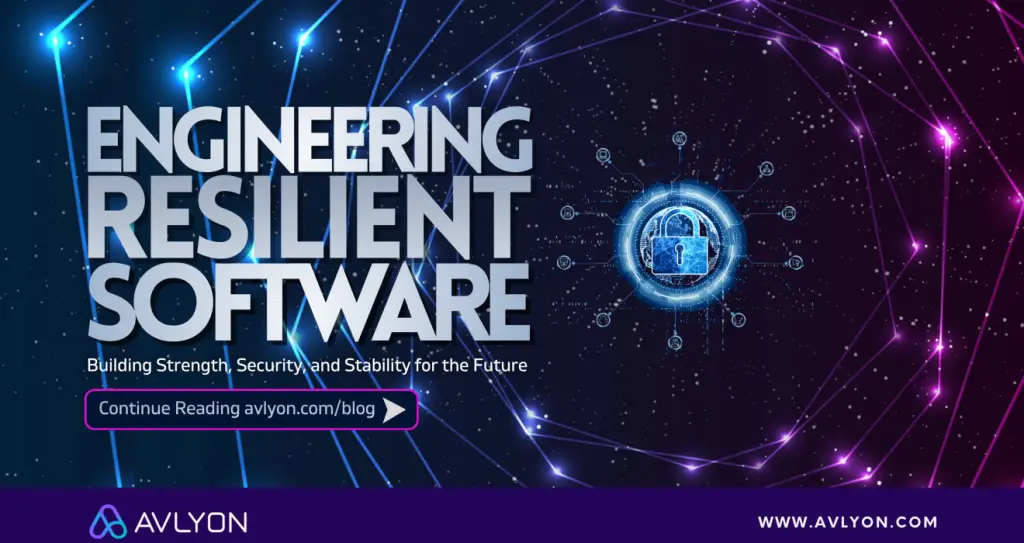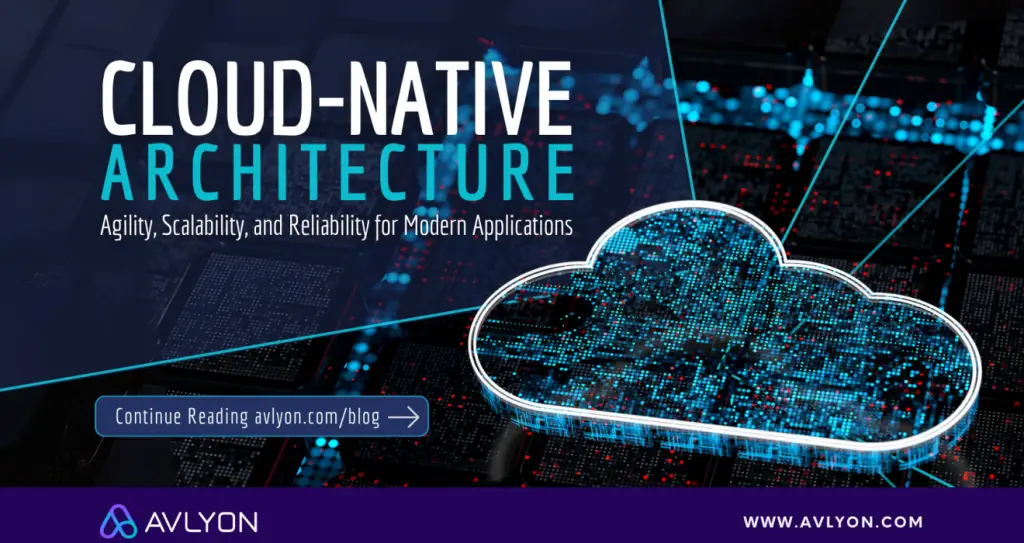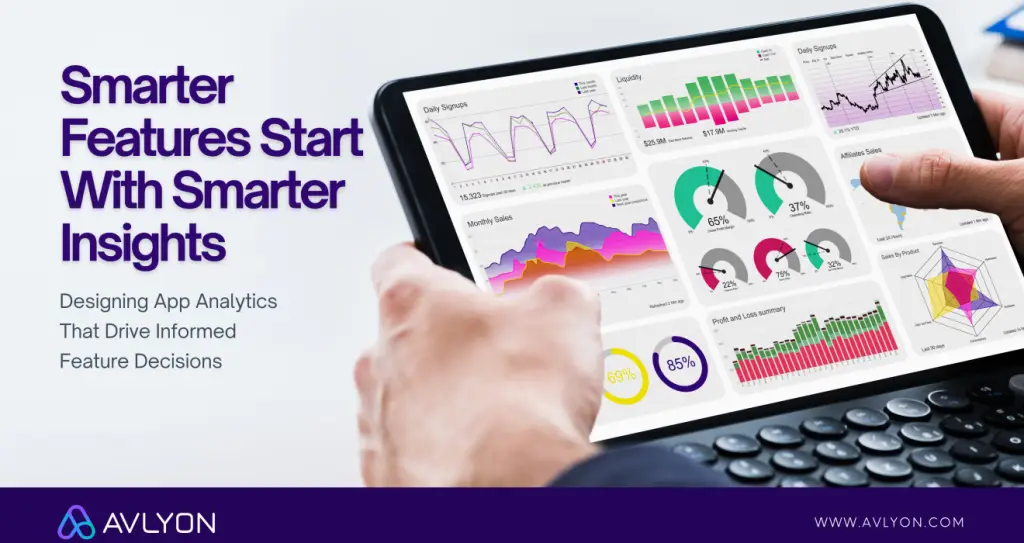Engineering for Resilient Software in the Era of Rising Cyber Threats

Engineering for Resilient Software in the Era of Rising Cyber Threats Why Resilience Is the New Benchmark for Software In today’s digital economy, software powers everything from business operations to customer experiences. Yet, the same technology that drives growth has also become a prime target for cyber threats. According to Check Point Research, global cyberattacks increased by 38% in 2024, with many incidents tied to vulnerabilities in cloud systems and software supply chains. This growing threat landscape has made resilience an essential part of software engineering. Building resilient software is no longer about adding protection at the end of development. It is about designing systems that can adapt, recover, and continue to perform reliably even under attack or failure. Security as a Foundation, Not a Feature Traditional software development often treated security as a final step before launch. That approach no longer works. Modern engineering teams integrate protection from the start, following a secure-by-design mindset. Key practices include: Threat modeling to identify possible attack paths before coding begins. Automated code scanning and reviews to detect vulnerabilities early. Zero Trust frameworks that verify every access request. Ongoing patching and dependency management to prevent outdated code risks. Scalable Architecture for Reliable Performance Resilience is built on flexibility. Cloud-native architectures that use microservices and containers allow applications to adapt to dynamic conditions without downtime. When each component operates independently, issues can be isolated quickly, minimizing impact on the entire system. This distributed design enables faster recovery, automatic scaling, and stronger reliability. Gartner predicts that by 2026, more than 85% of organizations will rely on cloud-native architecture to improve resilience and reduce downtime. At Avlyon, our engineers design modular systems with container orchestration to ensure performance and stability under pressure. Each project is tailored to handle growth, security, and performance without compromise. Testing Beyond Functionality Testing for functionality is no longer enough. Today, development teams test for endurance, failure recovery, and resistance to attacks. Common resilience testing techniques include: Penetration testing to expose exploitable weaknesses. Chaos engineering to simulate real-world disruptions. Load and performance testing to assess system stability under high demand. According to IBM’s 2024 Cost of a Data Breach Report, organizations that regularly conduct testing and simulation save an average of USD 1.5 million per breach compared to those that do not. Testing for resilience ensures systems are prepared for unpredictable conditions and builds user trust through reliability. Continuous Monitoring and Rapid Response Maintaining resilience requires constant awareness. Continuous monitoring enables teams to detect irregular activity before it becomes a threat. Modern observability tools combine analytics and automation to track: Response times and latency Error rates and service availability Unauthorized access attempts System performance trends When integrated with automated alerts and self-healing workflows, these systems help identify and resolve problems instantly. This proactive approach turns monitoring into a source of protection and operational intelligence. The Human Factor in Digital Resilience Technology is only as strong as the people behind it. Building resilient software also requires a culture of security awareness. Within a DevSecOps framework, developers, engineers, and operations teams share responsibility for risk management and response. Training and collaboration ensure that everyone understands the potential impact of design and deployment choices. A McKinsey study revealed that 70% of cybersecurity incidents are caused by human error, misconfiguration, or lack of awareness. This shows that investing in people is just as important as investing in technology. At Avlyon, we emphasize continuous learning and collaboration across teams to ensure every member contributes to maintaining trust and resilience. The Future of Predictive Resilience The next stage of resilient software is not just reacting to threats but predicting them. AI-driven monitoring tools now detect anomalies and prevent issues before they escalate. By integrating predictive analytics into DevOps workflows, organizations can detect unusual activity patterns, automate responses, and maintain consistent uptime. This predictive resilience allows systems to improve continuously while minimizing business disruption. Resilience has evolved into a strategic advantage that strengthens brand reputation, customer trust, and long-term performance. Final Thought Engineering resilient software means building systems that adapt to change, recover from failure, and operate with confidence. At Avlyon, we believe in trust, talent, and thrive. These values guide how we design technology that performs reliably, scales efficiently, and stands strong in the face of emerging challenges. Our teams help clients create software that is not only functional but also future-ready. To learn how Avlyon can help your business strengthen its digital foundation, visit www.avlyon.com and connect with our experts.
Cloud-Native Architecture for Modern Applications: Building Agility, Scalability, and Reliability

Cloud-Native Architecture for Modern Applications: Building Agility, Scalability, and Reliability Modern businesses need applications that are fast, adaptable, and able to handle unpredictable workloads. Legacy monolithic systems often fall short, leaving companies struggling with downtime, costly maintenance, and limited flexibility. Cloud-native architecture changes this by combining microservices, containerization, and automation into a framework that makes scaling and innovation easier. According to CNCF’s 2024 State of Cloud Native report, 84% of organizations are running containers in production, highlighting how cloud-native has moved from early adoption to mainstream practice. Why Cloud-Native Matters Unlike traditional systems that rely on centralized designs, cloud-native applications are built to perform in dynamic environments. They use cloud services to deliver faster deployment, stronger resilience, and continuous scalability. Businesses that adopt this approach reduce time-to-market, maintain reliable performance during demand spikes, and cut infrastructure waste. Key benefits include: Agility: Continuous delivery and rapid iteration cycles shorten development timelines. Scalability: Systems adjust automatically to demand, avoiding over-provisioning or outages. Resilience: Distributed microservices limit the impact of failures and speed up recovery. Efficiency: On-demand resources lower operating costs compared to static infrastructure. Building Stability Before Scaling Successful AI feature rollouts begin in controlled environments. Instead of exposing all users to a new model immediately, teams should adopt incremental testing. Shadow deployments, where AI models run silently in the background, allow predictions to be compared against real outcomes without affecting user experience. Similarly, phased A/B testing ensures that features demonstrate measurable improvements before being scaled further. At Avlyon, our engineering teams guide clients through phased rollouts with robust monitoring. This approach minimizes risk while building confidence that AI features are ready to scale responsibly. Core Principles of Cloud-Native Architecture MicroservicesApplications are divided into small, independent services. This structure improves development velocity and prevents single points of failure. ContainersTechnologies such as Docker and Kubernetes package applications with dependencies, ensuring consistency across environments and simplifying deployment at scale. DevOps and AutomationAutomated CI/CD pipelines streamline releases, reduce errors, and support continuous improvement. Observability and Monitoring Monitoring tools track system health in real time. Metrics such as latency, throughput, and error rates help teams detect and resolve issues before they affect users. Challenges in Cloud-Native Adoption Adopting cloud-native requires more than tools; it demands a mindset shift and new processes. Cultural Change: Teams must embrace DevOps collaboration instead of working in silos. Operational Complexity: Distributed systems need robust monitoring and governance to avoid blind spots. Security Risks: Containers and APIs expand the attack surface, making proactive security practices essential. A McKinsey survey found that 70% of cloud-migration programs stall due to operational and cultural barriers, underlining the importance of leadership, planning, and cross-functional alignment. Real-World Impact of Cloud-Native Enterprises across industries are already achieving measurable gains: Retailers scale microservices during seasonal sales to handle 10x traffic without disruption. Fintech firms use container orchestration to ensure secure, uninterrupted digital payments. SaaS providers accelerate release cycles, moving from quarterly updates to weekly improvements. At Avlyon, our engineering teams design and implement cloud-native systems that balance speed with stability. We help clients deploy strategies that are technically sound, cost-efficient, and future-ready. Final Thought Cloud-native architecture is more than a technology shift. It is a foundation for building applications that adapt quickly, scale responsibly, and maintain long-term resilience. By embracing microservices, containers, automation, and governance, organizations set themselves up for innovation and sustainable success. At Avlyon, we guide businesses through this transition, ensuring they gain not just the benefits of the cloud, but the confidence that their systems are designed to grow and evolve with them. If your team is ready to unlock the potential of cloud-native, visit www.avlyon.com to connect with our experts.
Designing App Analytics That Drive Informed Feature Decisions

Designing App Analytics That Drive Informed Feature Decisions In today’s data-driven product landscape, designing app analytics is essential. The ability to track user behavior, analyze engagement, and extract actionable insights directly influences how features evolve. For digital products to remain competitive and relevant, teams must embed analytics thoughtfully and ensure that the data collected leads to real product decisions. Whether you’re building a mobile app, web platform, or enterprise tool, analytics needs to be part of your product development strategy from day one. Why App Analytics Matters in Feature Strategy Modern users expect intuitive, personalized, and seamless experiences. To deliver this, product teams must understand: Which features are being used and how frequently Where users drop off or abandon flows What drives conversions, retention, or support queries How engagement varies across devices or user types According to Mixpanel’s Product Benchmarks Report, only 20 percent of new features launched by product teams see meaningful long-term adoption. This highlights a serious issue: building features without data can result in wasted effort and missed opportunities. App analytics helps validate ideas, uncover usability issues, and guide product teams toward building features that truly add value. Start With the Right Metrics At the core of meaningful analytics is event tracking. These events reflect user actions such as logging in, clicking a button, completing a transaction, or watching a video. Best practices for event design: Focus on metrics that connect to business goals. Track actions like “checkout started,” “invite sent,” or “profile completed” Group events based on user intent, such as explore, engage, convert, and retain Use consistent, structured naming conventions to make dashboards readable and scalable At Avlyon, our product engineering teams work with clients to define key events early in the product lifecycle to ensure accurate measurement and smarter decisions. Build Feedback Loops Into the Feature Lifecycle App analytics should support every stage of feature development: planning, testing, launching, and refining. Before launch: Use existing usage data to identify gaps or opportunities Define measurable success metrics such as improving task completion by 15 percent or reducing friction by 20 percent During rollout: Monitor feature usage through A/B testing or feature flags Track how different segments interact with the new feature After launch: Measure adoption trends over time, not just on launch day Assess whether the feature improves retention, satisfaction, or conversion According to Amplitude, high-performing product teams are 3.5 times more likely to use structured experimentation frameworks when launching new features. Tools That Power App Analytics To collect and interpret meaningful data, you need a solid analytics stack. Some commonly used tools include: Event Tracking: Google Analytics, Mixpanel, Amplitude, Firebase User Behavior Visualization: Hotjar, FullStory Data Warehousing: BigQuery, Snowflake Business Intelligence: Metabase, Looker Experimentation and Rollouts: Optimizely, LaunchDarkly Custom Dashboards: Grafana, Superset At Avlyon, we tailor each analytics setup to fit the specific needs of the product and the teams using it, making sure the data is reliable, timely, and actionable. Stay Compliant and Respect Privacy With regulations like GDPR and CCPA, product teams must collect and manage user data responsibly. Collect only what you need for analysis Anonymize sensitive information where possible Allow users to control their data through consent and opt-outs Trust is an important part of user experience. A responsible analytics design protects user data and builds long-term credibility. Real-World Impact of Smart Analytics Here are a few practical examples of how companies used analytics to improve features: A finance app noticed that 70 percent of users dropped off during profile setup. Based on heatmaps and funnel analysis, they simplified the flow and increased completion rates by 42 percent An ecommerce platform observed that users who added items to their wishlist were more likely to return. They enhanced the wishlist experience, leading to a 30 percent boost in repeat purchases A B2B software product found that users who watched an onboarding video were twice as likely to complete their first transaction. They redesigned their onboarding to highlight the video earlier Each improvement was guided by real usage data, not assumptions. Final Thought Informed decisions start with intentional tracking. Designing app analytics with purpose allows teams to build better features, validate their impact, and evolve products based on user behavior. At Avlyon, we partner with companies to design and develop software that is intelligent from the inside out. If you’re looking to turn your product into a data-informed success, we are ready to help.
Successful Software Development

Successful Software Development Key Strategies for Success: Developing a software product from idea to launch is an exciting yet challenging process. Success in today’s fast-paced market requires the ability to adapt quickly, keep customers at the forefront, and ensure technical excellence. Below are key strategies to help you navigate the software development journey, from building a Minimum Viable Product (MVP) to ensuring scalability, security, and observability. 1. Start with an MVP (Minimum Viable Product) A Minimum Viable Product (MVP) is the version of your product that includes only the essential features necessary to solve the core problem for your users. The MVP strategy allows you to: Launch faster: By focusing on core features, you can get your product into users’ hands sooner, gathering valuable feedback early on. Test market demand: Before committing to full-scale development, an MVP helps validate whether there is genuine interest and need for your product. Reduce development costs: Prioritizing essential features reduces wasted resources and allows you to iterate based on real-world data. 2. Embrace Fast Iteration Fast iteration is key to refining your product based on user feedback. Agile methodologies like Scrum or Kanban enable you to release updates and improvements frequently. Small, incremental changes: Instead of aiming for large releases, focus on making small, manageable changes that add value. This minimizes risk and ensures continuous improvement. Rapid user feedback loop: Gather feedback after each iteration to understand what works and what needs adjustment. Continuous feedback is critical to building a product that aligns with customer needs. Fail fast, learn faster: Not all ideas will succeed, and fast iteration helps you identify potential issues quickly, allowing you to pivot without major setbacks. 3. Prioritize Customer-Centricity Successful software products are designed with the user in mind. By adopting a customer-centric approach, you ensure that your product resonates with users and solves their real-world problems. Involve customers early: Engage potential users in the development process through surveys, interviews, and usability testing. Their insights can help shape features and functionality. Solve pain points: Focus on addressing specific customer pain points rather than just adding features. Each new feature should deliver tangible value to users. Measure Customer Satisfaction with NPS: The Net Promoter Score (NPS) is a widely used metric to gauge customer loyalty and satisfaction. By regularly measuring NPS, you gain a clear picture of how users feel about your product and how likely they are to recommend it. High NPS scores indicate strong product-market fit, while low scores can signal areas where improvements are needed. 4. Optimize for Performance and Scalability Performance and scalability are essential for a software product’s long-term success. A product that works well with a small user base but slows down or crashes as it grows will quickly lose users. Build with scalability in mind: Design your system architecture to handle growth. Use cloud solutions, microservices, or serverless architectures to accommodate increasing demand without a complete overhaul. Optimize for speed: Focus on delivering a product that runs smoothly with minimal lag. A fast, responsive product is key to retaining users and providing a positive experience. Monitor load performance: Use load testing tools to simulate increased traffic and stress-test your system to identify weak points before they become critical issues. 5. Incorporate Strong Security Practices Security must be integrated into every stage of the development process, not treated as an afterthought. Data breaches can be costly both financially and in terms of user trust. Secure by design: Implement security best practices from the ground up, such as encrypting sensitive data, using secure authentication methods, and performing regular vulnerability assessments. Compliance: Be aware of relevant data protection regulations, such as GDPR or HIPAA, and ensure your product complies with these standards. Threat modeling: Regularly assess potential threats to your system and design mechanisms to mitigate these risk 6. Use Data and Analytics for Decision-Making Data-driven decision-making is critical to improving your product over time. Analytics provide insights into user behavior, product performance, and areas for optimization. Track key metrics: Set up tools to monitor essential metrics such as user engagement, retention rates, and conversion rates. Use these metrics to measure success and identify bottlenecks. Experiment with A/B testing: Test different versions of features or UI changes to determine which resonates best with your users. A/B testing helps fine-tune the product experience. Customer behavior analysis: Analyze how users interact with your product to identify pain points or areas of confusion. This can help prioritize the next set of improvements. 7. Leverage Site Reliability Engineering (SRE) Site Reliability Engineering (SRE) is a discipline that uses software engineering to ensure that systems are scalable and reliable. Automation of operations: Automate repetitive operational tasks, such as deployments, scaling, and monitoring, to reduce the likelihood of human error. Set clear SLAs and SLOs: Establish Service Level Agreements (SLAs) and Service Level Objectives (SLOs) to define acceptable levels of performance and availability for your product. Incident response and post-mortems: Prepare for downtime by having incident management practices in place. When failures occur, conduct post-mortems to understand what went wrong and how to prevent future issues. 8. Implement Observability for Proactive Monitoring and Alerts Observability allows you to monitor, troubleshoot, and optimize your software in real time, ensuring it’s always running smoothly. An effective observability strategy ensures your team can detect and resolve issues before they impact users. Centralized logging: Use logging tools to gather and analyze data from various parts of your application. Centralized logging provides insights into issues as they occur, making troubleshooting faster and more efficient. Monitoring metrics: Set up dashboards to monitor performance, uptime, and error rates. Tools like Prometheus, Grafana, or Datadog help track these metrics, providing real-time visibility into your system’s health. Tracing and root cause analysis: Implement tracing to follow requests as they flow through different components of your system. This helps identify bottlenecks and resolve issues quickly by pinpointing where failures occur in the stack. Alerting and Automation: Alerts are crucial in a proactive observability system. Set up automated alerts to notify your team when performance deviates from acceptable thresholds or
